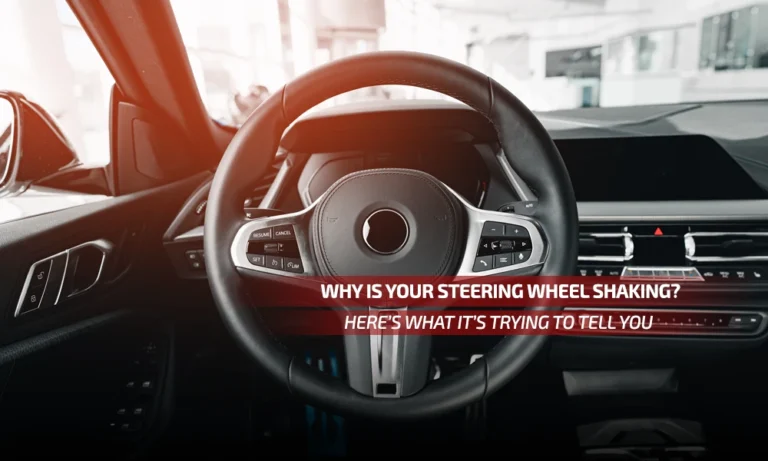Let’s cut to the chase. If your steering wheel is shaking, it’s not just annoying—it’s warning you about a safety issue.
In the UK’s unpredictable roads, that trembling could be a sign of wear, misalignment, or a looming mechanical failure.
Fixing it early keeps you and your family safe—and saves you money down the road.
1. Tyres & Balancing: The Usual Suspects
By far the most common cause of a shaking wheel is unbalanced or unevenly worn tyres.
Hitting potholes or losing wheel weights throws off balance, and the vibration becomes noticeable at speeds over 50 mph.
Why do vibrations only start at higher speeds?
When tyres are unbalanced, the error in rotation causes small wobbles.
As speed increases, these become more pronounced—often not noticeable under 30 mph, but definitely felt at motorway speeds.
Get your wheels balanced every 10,000–12,000 miles or after any tyre strike .
2. Wheel Alignment & Tyre Condition
Misalignment—often from hitting curbs or general wear—can make your car pull to one side and cause vibrations.
Look for uneven tyre wear and teeth missing from tread blocks. These signs often appear first before the shaking becomes severe.
3. Brake Issues: Warped Rotors & Sticky Callipers
If your steering shakes only when braking, warped discs (rotors) are often to blame.
These discs distort through heat cycling, making your brakes grab unevenly.
Sticky calipers can also cause the wheel to vibrate even when you’re not braking .
What if steering shakes while braking lightly?
Light brake shakes usually signal rotor distortion or seized calipers. Don’t delay.
A quick check at a garage could reveal warped discs that need replacement or resurfacing. It’s a safety concern—especially in wet UK weather .
4. Suspension & Steering Joints
Loose ball joints, tie rods, worn bushes, or damaged wheel bearings can send vibrations through the steering.
These show up distinctively—either during turning, acceleration, or cruising speeds.
Should I still drive if suspension is faulty?
No. Worn suspension parts compromise handling and emergency braking.
If vibrations happen as you steer or on uneven roads, get your suspension checked immediately—before it leads to more damage .
5. Loose Wheel Nuts & Bolts
A surprisingly simple fix: loose wheel nuts or bolts can cause wobble—even between services.
After any wheel fitting or tyre change, always re-torque nuts and have them re-checked after a couple of hundred miles.
Getting It Sorted: The 3-Minute DIY & Garage Guide
- Tighten wheel nuts, balance tyres, check pressures.
- Brake test: see if shaking coincides with braking.
- Inspect tyres: check for bulges, uneven wear, tread depth.
- Notice speed range: above 40 mph? Likely tyres/wheels. Only when braking? It’s brakes.
- Get aligned, brakes checked, suspension scanned as needed.
Don’t Ignore the Warning
A vibrating steering wheel isn’t just your car acting up—it’s a sign that something’s compromised. UK roads can be rough.
Deal with the issue early before it turns into a costly or dangerous breakdown.







